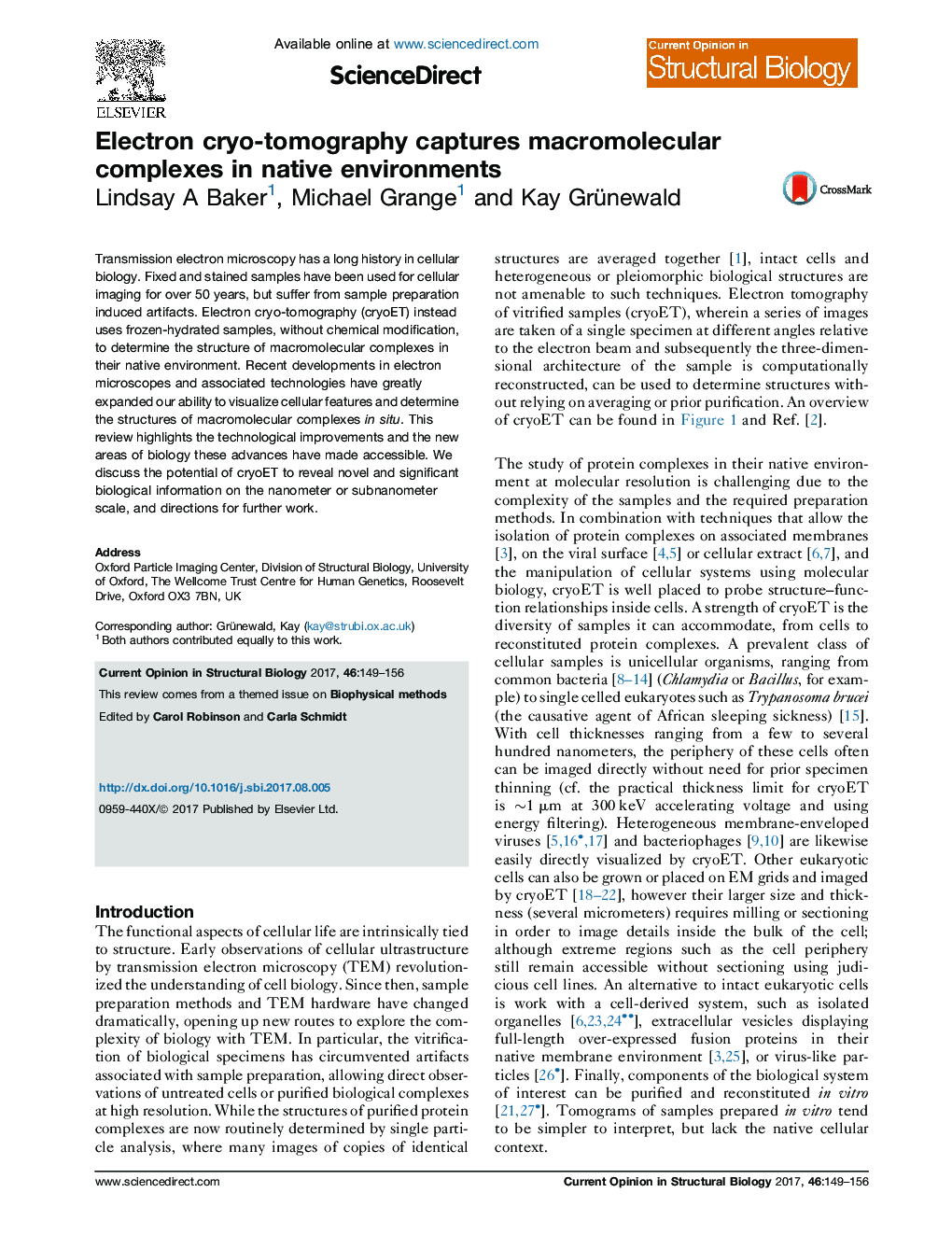| Article ID | Journal | Published Year | Pages | File Type |
|---|---|---|---|---|
| 5510815 | Current Opinion in Structural Biology | 2017 | 8 Pages |
â¢Electron cryo-tomography (cryoET) reveals structures in a near-native state.â¢Recent technological advances have increased the information obtainable by cryoET.â¢CryoET can bridge the gap between structural and cellular biology.â¢Integration with other methods gives new insight into function and cellular context.
Transmission electron microscopy has a long history in cellular biology. Fixed and stained samples have been used for cellular imaging for over 50 years, but suffer from sample preparation induced artifacts. Electron cryo-tomography (cryoET) instead uses frozen-hydrated samples, without chemical modification, to determine the structure of macromolecular complexes in their native environment. Recent developments in electron microscopes and associated technologies have greatly expanded our ability to visualize cellular features and determine the structures of macromolecular complexes in situ. This review highlights the technological improvements and the new areas of biology these advances have made accessible. We discuss the potential of cryoET to reveal novel and significant biological information on the nanometer or subnanometer scale, and directions for further work.
